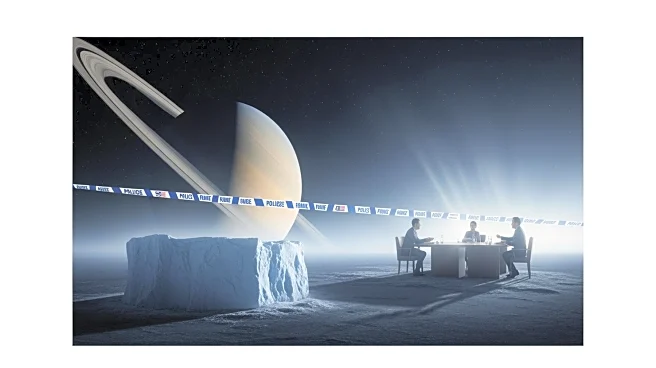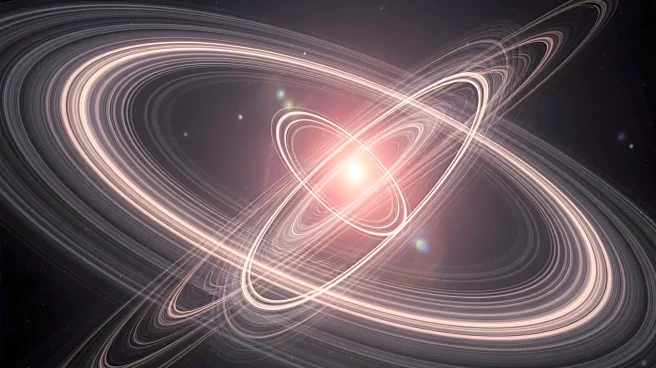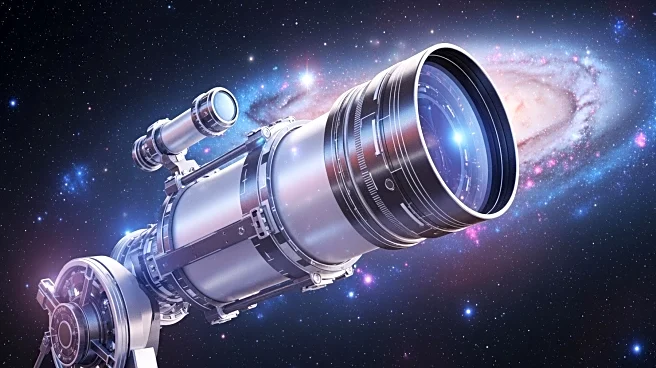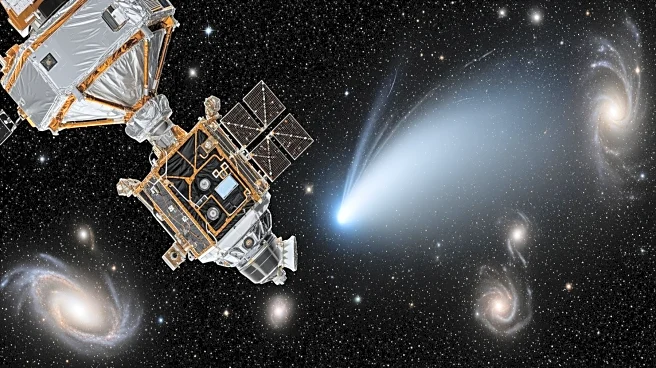What's Happening?
A team of astronomers led by Professor Adam Burgasser from the University of California San Diego has discovered phosphine in the atmosphere of a brown dwarf named Wolf 1130C. This finding was made using
the James Webb Space Telescope (JWST), which is capable of analyzing dim, low-temperature objects. Phosphine, a toxic and explosive gas, is typically found in the atmospheres of gas giants like Jupiter and Saturn and is considered a potential biosignature for anaerobic life. The discovery is surprising because phosphine was expected to be abundant in similar environments around other stars, including brown dwarfs, but has been elusive in previous observations. Wolf 1130C is part of a three-star system located 54 light-years away in the constellation Cygnus, and its atmosphere contains far fewer metals than the Sun, providing a unique opportunity to study primitive cosmic chemistry.
Why It's Important?
The detection of phosphine in Wolf 1130C challenges existing theoretical predictions about phosphorus chemistry in brown dwarf atmospheres. This discovery could have significant implications for understanding atmospheric chemistry in celestial bodies and the potential for life beyond Earth. Phosphine's presence in Wolf 1130C suggests that phosphorus may behave differently in metal-poor environments, which could inform future studies on the origins of phosphorus in the galaxy. Additionally, understanding phosphine chemistry in non-life-supporting atmospheres is crucial for using this molecule in the search for life on terrestrial worlds outside our solar system.
What's Next?
The research team plans to conduct further JWST observations of other metal-poor brown dwarfs to determine if the presence of phosphine is a common pattern. They aim to test the hypothesis that phosphine forms due to the unique chemical composition of Wolf 1130C, where phosphorus may be bound in other molecules in typical conditions. Another possibility is that phosphorus was produced locally within the Wolf 1130ABC system by its white dwarf, Wolf 1130B, through past nova events. These upcoming studies could provide deeper insights into the chemical processes occurring in brown dwarfs and their implications for cosmic chemistry.
Beyond the Headlines
The discovery of phosphine in Wolf 1130C opens new avenues for exploring the origins and behavior of phosphorus in the cosmos. It raises questions about the role of stellar explosions in distributing phosphorus throughout the galaxy and how these processes might influence planetary atmospheres. Understanding these mechanisms is essential for interpreting phosphine as a biosignature in the search for extraterrestrial life, particularly on planets with conditions similar to those found in brown dwarfs.











